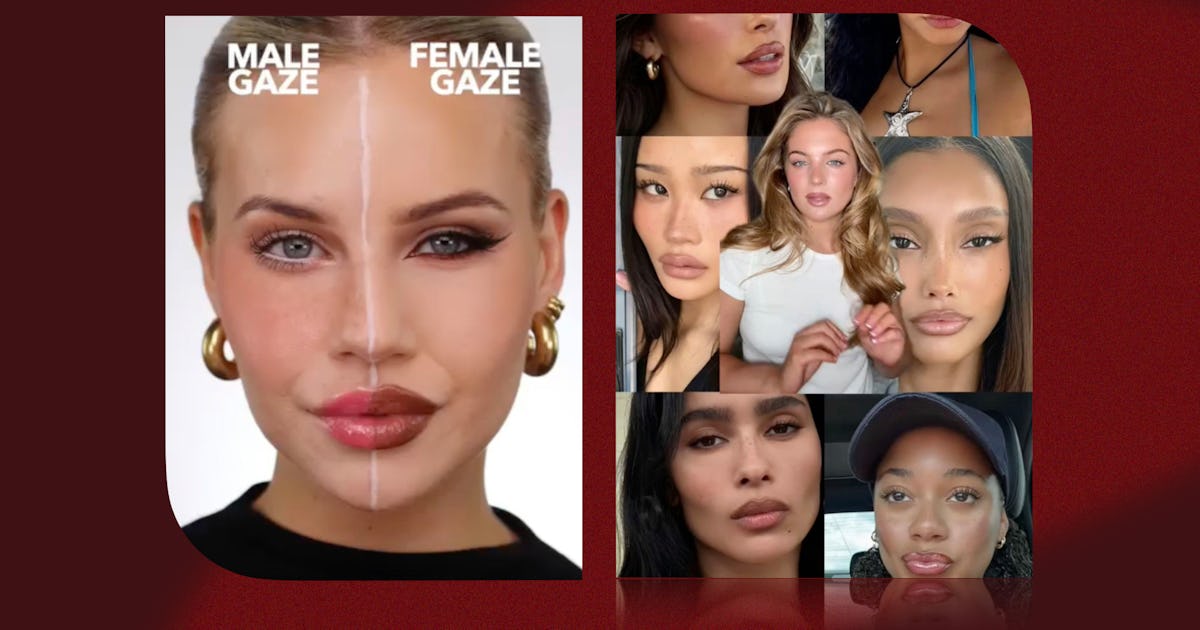
"A recent psychology study found that men perceive the "peak" level of attractiveness as about 40% less makeup than many women actually wear. They also rate the same woman with heavier glam as "less trustworthy" and "more intimidating." Yet they're notoriously bad at detecting makeup at all - correctly guessing only 30% of the time. As such, male gaze makeup leans into the illusion of effortless beauty, even when it's anything but."
"Female gaze makeup, meanwhile, flips the priorities. Instead of performing prettiness, it emphasizes play and personality - even if that means embracing looks men allegedly "don't get." Think back to the infamous birthday makeup discourse of 2023, when men complained en masse about bold glam. Other "female gaze" staples include graphic liner, blush draping, vampy lips, clumpy mascara, colorful smoky eyes - basically, any choice that signals fun over palatability. It's makeup that's meant to be interesting"
Laura Mulvey coined the male gaze in 1975, describing women on screen as erotic objects while men drive narrative. TikTok functions as a new screen where makeup is a battleground for desirability. On social media, the male gaze has become shorthand for a 'girl-next-door' aesthetic: soft, clean, innocently earnest looks that mimic effortless beauty. A psychology study found men see peak attractiveness at about 40% less makeup, rate heavier glam as less trustworthy and more intimidating, and detect makeup only 30% of the time. Female gaze makeup prioritizes play and personality, favoring graphic liner, blush draping, vampy lips, and colorful smoky eyes.
Read at Bustle
Unable to calculate read time
Collection
[
|
...
]